
Shooting a Roller Derby Bout
Of all the disciplines at the 2024 World Skate Games, which took place in Italy last September, roller derby is probably one of the lesser known, but also one of the most difficult to photograph. A contact sport, roller derby takes place in a very small space, in a very short time and at a very high speed. Once combined together, these three factors give the photographer a pretty hard time Initially published on 35mmc.com.
Having been given a full access media pass to all the venues and the court, I was able to stay in a privileged position to take the shots. However, although in the past I have taken pictures of high level skating competitions, this was the first time with a roller derby match, so I had to get up to speed very quickly.
In these cases, I have developed a protocol to minimise the negative consequences of not knowing the discipline you are going to shoot at.
The first step is to understand, as early as possible, the rules of the game and how it works: to this end, Youtube is invaluable. So, to oversimplify, I learned that the core idea of a roller derby match is for a runner to get away from the opposing blocking team while his blocking team tries to stop the other team’s runner. Therefore, an educated guess is that the best moments to get a good picture are when the two teams collide and when the runner (‘jammer’ is the correct term) evades the opposing blockers.
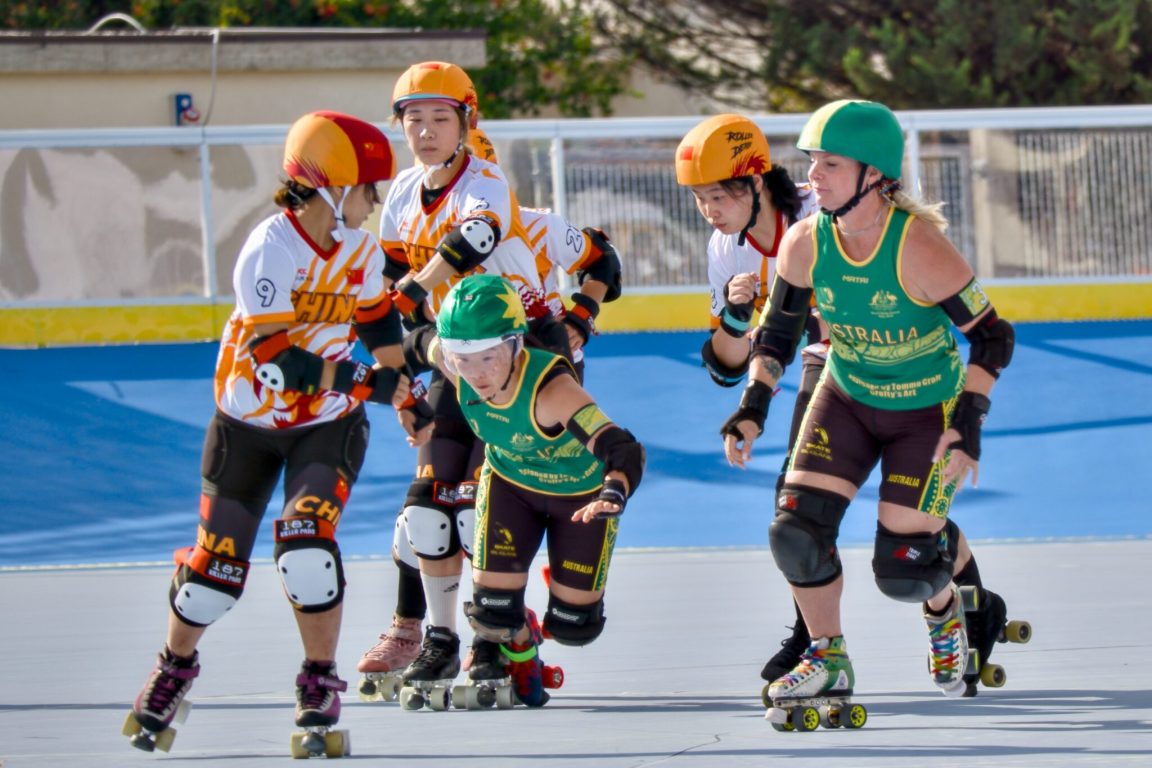
The second step is to spend a lot of time watching (and shooting) training sessions. This will allow you to understand how the environment can affect the shots (‘invasive’ props, natural or artificial lighting and exposure/flicker issues), what equipment is most effective to carry, and how the camera and lenses react to the dynamics of the game (particularly in terms of autofocus and file writing speed when shooting in burst mode). For example, the columns supporting the court’s lighting were a nightmare as they often intruded into the background.
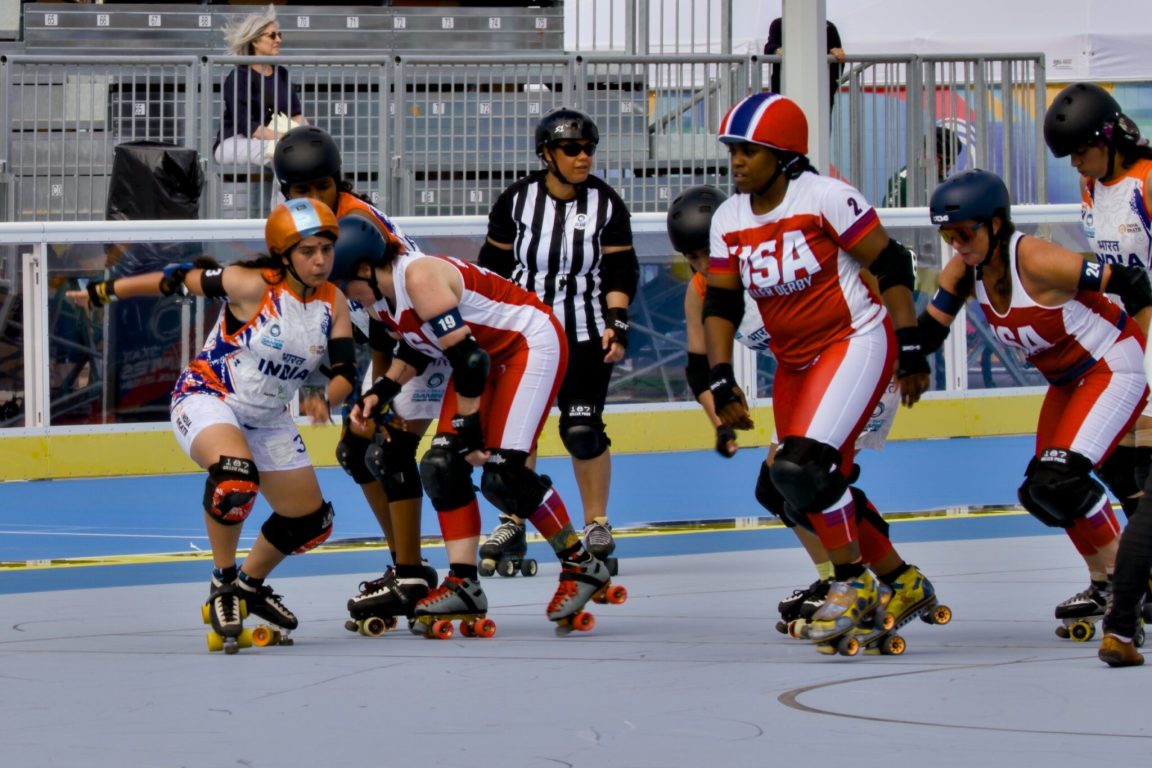
Speaking of lenses, bringing the Fuji XF 150-600 and Pentax D FA 150-450 was an overkill. Indeed, the bouts were played in a limited part of the court and there was plenty of room to stay closer to action and take advantage of the wider creative options offered by a 70-200 2.8 (which, my bad, I did not bring).
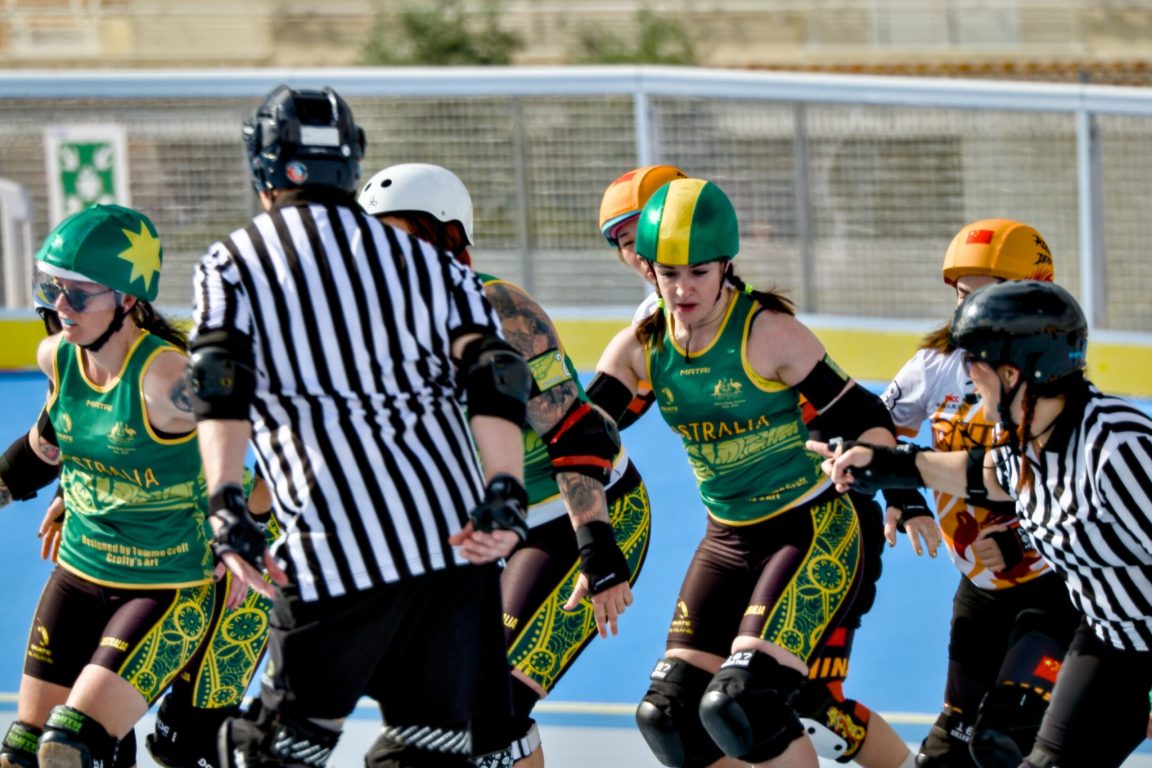
The third step is to wait a while before getting closer to the athletes during their performance.
Competitions are moments of high emotional tension for everybody, including coaches and referees. If you are not familiar with the people and the sport, the chances of being in the wrong place at the wrong time are very high. It is therefore advisable to spend some time looking from a safe distance at the interactions between the people involved, to understand when and where it is possible to go without jeopardising the game.
Coming to the shooting practicalities, as a rule of thumb (but remember, rules are made to be broken), there are three possible types of moments to look for during the game: ‘scrums’ (as captured in the previous images), one-on-one interactions like this one
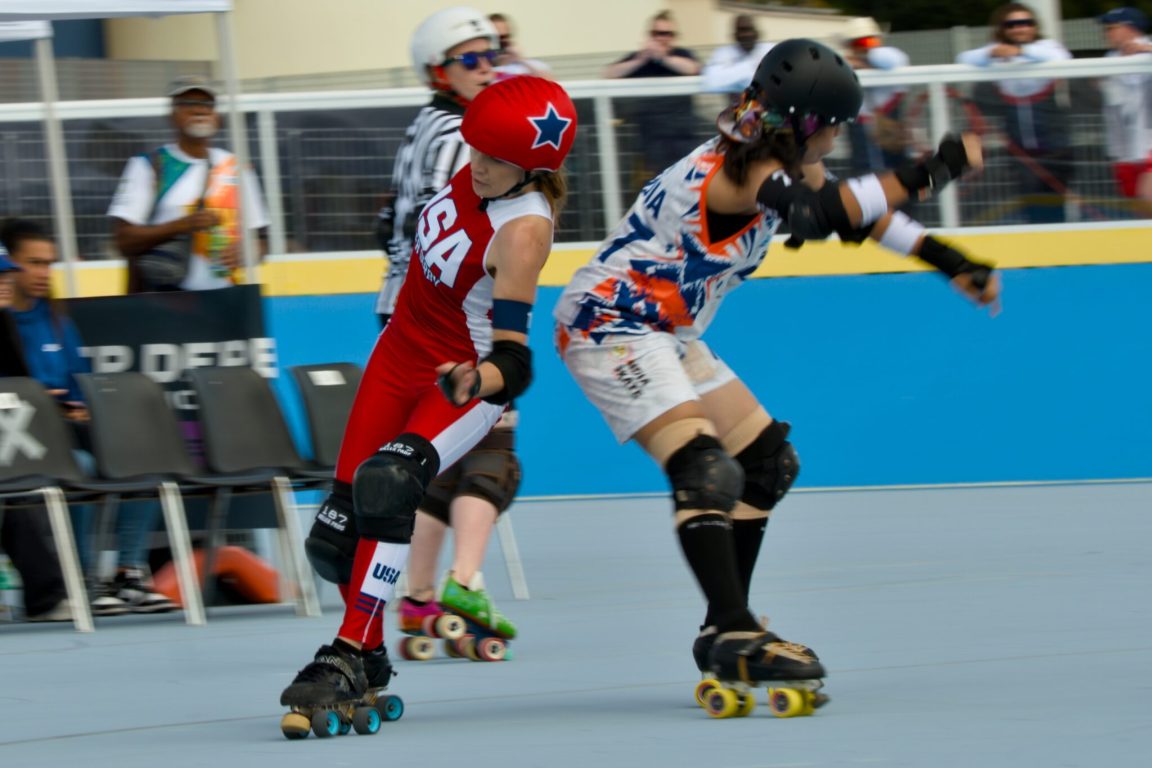
and isolated runs.

Also pre-match and post-match periods are full of interesting moments, such as this one:
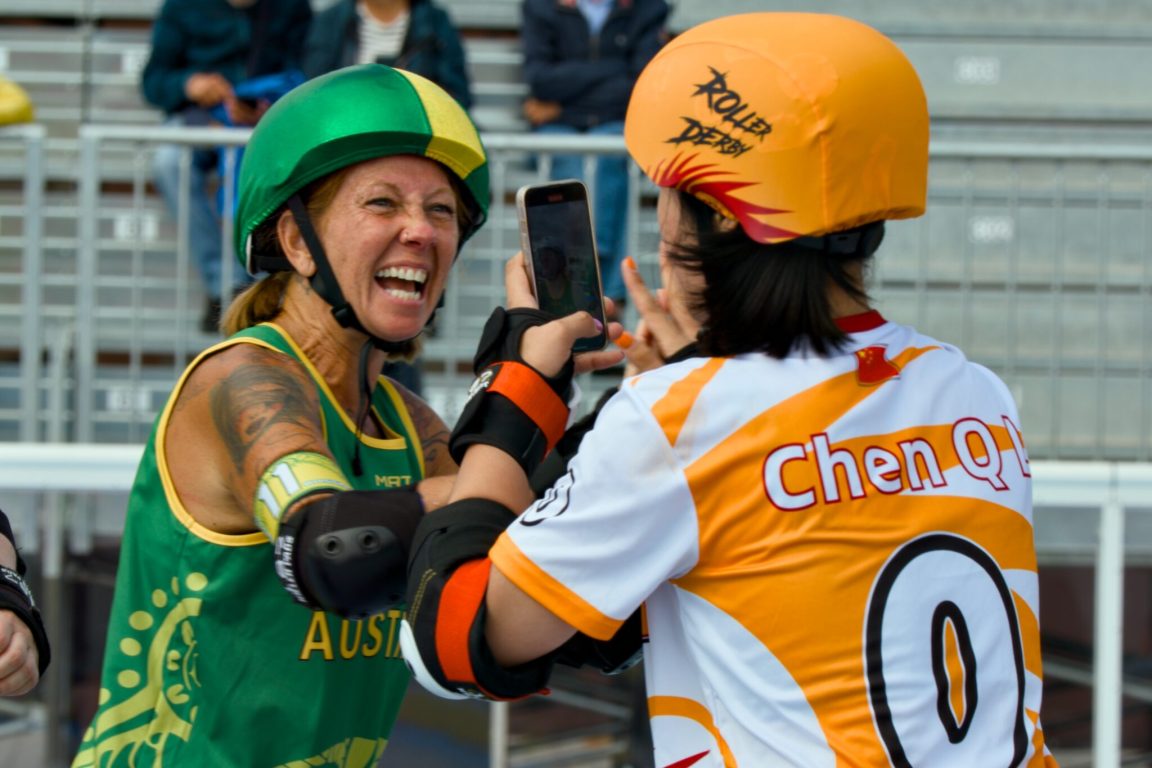
A final word on ‘the moment’: skaters are always on the move to keep their balance, and this means that shots must be taken as soon as the eye recognises them, otherwise the subject may shift position (and/or) someone else may appear and spoil the composition. It is therefore better to shoot with shutter priority at least at 1/500s than with aperture priority.




